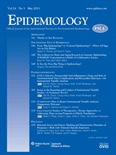
EPIDEMIOLOGY
Scope & Guideline
Empowering research to enhance population health outcomes.
Introduction
Aims and Scopes
- Causal Inference and Methodological Advancements:
The journal emphasizes the development and application of causal inference methodologies, including target trial emulation and instrumental variable analysis, to better understand the causal relationships in epidemiological studies. - Longitudinal and Observational Studies:
There is a strong focus on utilizing longitudinal data and observational study designs to assess health outcomes, evaluate interventions, and understand the dynamics of disease progression in populations. - Health Disparities and Social Determinants of Health:
Research addressing health disparities, particularly among marginalized groups and the impact of social determinants on health outcomes, is a significant area of interest, highlighting the journal's commitment to health equity. - Environmental and Occupational Epidemiology:
The journal publishes studies exploring the relationship between environmental exposures, such as air pollution and chemicals, and various health outcomes, underscoring its role in addressing public health concerns related to the environment. - Methodological Innovations in Epidemiology:
The journal supports innovative statistical techniques and methodologies, including machine learning and mixed-methods approaches, to enhance the robustness of epidemiological research.
Trending and Emerging
- Impact of COVID-19 on Health Outcomes:
Research related to the COVID-19 pandemic, including vaccine effectiveness, health disparities during the pandemic, and the long-term effects of COVID-19, has surged, illustrating the journal's responsiveness to emerging global health crises. - Advanced Statistical Techniques in Epidemiology:
There is an increasing trend in the use of sophisticated statistical methods, such as machine learning and synthetic control approaches, to enhance causal inference and address complex epidemiological questions. - Environmental Health Research:
A growing emphasis on the intersection of environmental exposures and health outcomes, particularly in relation to climate change and pollution, is evident, reflecting heightened public and scientific interest in environmental health issues. - Mental Health and Social Determinants:
Research exploring the connections between social determinants of health, mental health outcomes, and inequities is gaining traction, highlighting the importance of addressing mental health in public health strategies.
Declining or Waning
- Traditional Risk Factor Studies:
There appears to be a waning interest in studies that solely focus on traditional risk factors for diseases without considering the broader social or environmental context, as newer methodologies emphasize complex interactions. - Single-Domain Health Studies:
Research that examines health outcomes in isolation, without integrating multiple domains (social, environmental, behavioral), is becoming less common, reflecting a shift towards more holistic approaches in public health. - Basic Descriptive Epidemiology:
Although foundational, basic descriptive epidemiology studies are being overshadowed by more advanced analytical studies that utilize causal inference and complex modeling techniques.
Similar Journals

EPIDEMIOLOGIC REVIEWS
Synthesizing Knowledge for a Healthier TomorrowEPIDEMIOLOGIC REVIEWS, an esteemed publication from Oxford University Press Inc, stands as a beacon in the fields of Epidemiology and Medicine, with a significant focus on synthesizing and analyzing the latest research and developments in these areas since its inception in 1979. This journal, with its ISSN 0193-936X and E-ISSN 1478-6729, is recognized for its high academic rigor, boasting a 2023 Q1 quartile ranking in both Epidemiology and Miscellaneous Medicine, and ranks #25 out of 148 in Scopus's Epidemiology category, placing it in the prestigious 83rd percentile. Although it does not currently offer open access, its subscription options provide comprehensive access to a wealth of epidemiological knowledge, essential for researchers, public health professionals, and students keen on advancing their understanding of health trends and disease patterns. With a commitment to promoting high-quality research and impactful insights, EPIDEMIOLOGIC REVIEWS plays a crucial role in enhancing public health discourse and shaping future epidemiological inquiries.
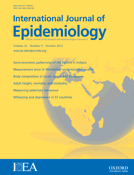
INTERNATIONAL JOURNAL OF EPIDEMIOLOGY
Championing evidence-based practices for public well-being.INTERNATIONAL JOURNAL OF EPIDEMIOLOGY, published by Oxford University Press, is a leading peer-reviewed journal established in 1972, dedicated to advancing the field of epidemiology and its applications in medicine. With an impressive impact factor and a Q1 ranking in both Epidemiology and Miscellaneous Medicine, this journal ranks among the top-tier publications in its category, reflecting its commitment to high-quality research and scholarship. The journal serves as a vital platform for researchers, professionals, and students to share innovative findings, methodologies, and insights in epidemiological science, thus contributing to the broader understanding of public health. The journal includes a diverse range of articles encompassing the latest trends and developments in the field, ensuring comprehensive access to essential information and promoting evidence-based practices. For those seeking rigorous academic discourse and the latest research, the INTERNATIONAL JOURNAL OF EPIDEMIOLOGY is an indispensable resource in the realm of health studies.
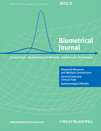
BIOMETRICAL JOURNAL
Exploring cutting-edge methodologies for a healthier future.BIOMETRICAL JOURNAL is a prestigious academic publication dedicated to advancing the fields of Medicine and Statistics. Published by WILEY since its inception in 1977, this journal plays a critical role in disseminating cutting-edge research and methodologies that bridge the gap between statistical theory and real-world medical applications. With an impressive Q1 ranking in both Medicine (miscellaneous) and Statistics, Probability and Uncertainty, it is recognized for its high-impact contributions to the scientific community. The journal actively encourages submissions that utilize innovative statistical techniques to address complex biomedical issues, making it an essential resource for researchers, professionals, and students aiming to enhance their understanding of quantitative approaches in health and medicine. Although the journal is not open access, its rigorous peer-review process guarantees the quality and relevance of published works, further establishing its significance in the academic landscape.

JOURNAL OF EPIDEMIOLOGY AND COMMUNITY HEALTH
Fostering innovation in epidemiology and community health.JOURNAL OF EPIDEMIOLOGY AND COMMUNITY HEALTH, published by the esteemed BMJ PUBLISHING GROUP, stands as a leading journal in the fields of Epidemiology and Public Health. With an impressive impact factor and ranking in the Q1 quartile for both Epidemiology and Public Health categories as of 2023, it significantly contributes to the dissemination of critical research that shapes public health policies and practices globally. The journal has been a vital resource since 1978, continuously providing an academic platform for the latest advancements and discussions pertinent to community health, environmental concerns, and epidemiological studies. Researchers, professionals, and students alike depend on this influential publication for rigorous peer-reviewed articles, thereby enhancing its reputation as one of the top journals in the field. Despite the absence of Open Access options, the journal's scholarly contributions are evident, making it indispensable for anyone engaged in public health and epidemiological research.
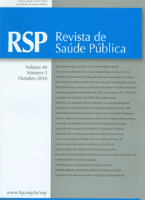
REVISTA DE SAUDE PUBLICA
Innovating for a Healthier TomorrowREVISTA DE SAUDE PUBLICA is a distinguished peer-reviewed journal dedicated to advancing the fields of public health and epidemiology. Since its inception in 1967, this Brazilian publication has been an essential resource for researchers and practitioners alike, promoting open access to vital research and innovations that shape health policies and public health practices. With an impressive impact reflected in its Q2 rankings in both Medicine (miscellaneous) and Public Health, Environmental and Occupational Health categories, the journal remains a key player in disseminating knowledge that drives societal well-being. The Scopus ranking positions it favorably at #209 out of 665 in its field, showcasing its commitment to quality and relevance. Published by the FACULDADE SAUDE PUBL DA USP in São Paulo, Brazil, REVISTA DE SAUDE PUBLICA offers a platform for scholars and professionals to engage with cutting-edge research from 1967 to 2024, ultimately fostering a healthier global community.
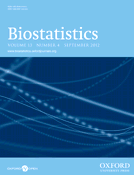
BIOSTATISTICS
Empowering researchers with cutting-edge biostatistical insights.BIOSTATISTICS is a premier academic journal dedicated to the intersection of statistical methodologies and their applications in the field of biomedicine, published by Oxford University Press. With its ISSN 1465-4644 and E-ISSN 1468-4357, the journal has established itself as a crucial resource for researchers and professionals in the broad disciplines of statistics and probability, particularly within medical contexts. The journal proudly holds a Q1 ranking in multiple categories as of 2023, including Medicine (miscellaneous), Statistics and Probability, as well as Statistics, Probability, and Uncertainty, placing it at the forefront of statistical research. It has also achieved notable Scopus rankings, underscoring its influence and reach—ranking 27th in Mathematics (Statistics and Probability) and 94th in Medicine (General Medicine). Although it does not currently offer open access options, BIOSTATISTICS remains committed to advancing scholarly conversation and innovation in statistical science, making it an essential outlet for both established and emerging researchers. With contributions spanning from 2003 to 2024, this journal is actively seeking to foster an understanding of complex statistical approaches in biomedicine, enabling professionals in the field to apply robust statistical techniques to real-world problems.
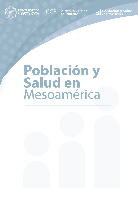
Poblacion y Salud en Mesoamerica
Connecting Scholars to Address Regional Health ChallengesPoblacion y Salud en Mesoamerica is a pivotal open-access journal published by the University of Costa Rica's Centro Centroamericano Poblacion. With an ISSN of 1659-0201 and an E-ISSN of the same, this journal has been dedicated since 2003 to advancing the fields of demography, epidemiology, health informatics, and public health within the Mesoamerican region. Addressing critical health and population issues, it aims to foster a deeper understanding of demographic trends and their implications on health policies. As of 2023, the journal ranks in the Q4 quartile across several categories, reflecting its commitment to publishing quality research while serving as a platform for emerging scholars and seasoned professionals alike. Although it is currently in the lower quartile ranks, the journal seeks to establish itself as a vital resource in the context of Mesoamerican social sciences and health, making it an essential tool for researchers and practitioners interested in regional population health dynamics. Its editorial board is comprised of experts dedicated to enhancing the scholarly conversation surrounding population health and policy in Central America.

International Journal of Occupational Medicine and Environmental Health
Fostering collaboration in occupational and environmental health research.The International Journal of Occupational Medicine and Environmental Health is a distinguished journal dedicated to advancing the fields of occupational medicine and environmental health. Published by NOFER Institute of Occupational Medicine in Poland, this open-access journal has been providing a platform for innovative research since 2011. With an ISSN of 1232-1087 and an E-ISSN of 1896-494X, it allows for wide dissemination of findings that address contemporary challenges in public health, occupational settings, and environmental issues. The journal has established itself as a vital resource, achieving a Q3 ranking in both Medicine (miscellaneous) and Public Health, Environmental and Occupational Health categories as of 2023, reflecting its commitment to quality and relevance. With a Scopus rank of #295 out of 665 in its domain, it places in the 55th percentile, affirming its growing impact within the scientific community. Researchers, professionals, and students seeking to enhance their knowledge and contribute to the discourse will find the rich content and comprehensive studies presented in this journal invaluable. Explore cutting-edge research from 1994 to the present, and join the conversation on occupational and environmental health issues that profoundly affect global communities.
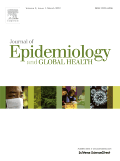
Journal of Epidemiology and Global Health
Transforming understanding of global health challenges, one article at a time.The Journal of Epidemiology and Global Health (ISSN: 2210-6006; E-ISSN: 2210-6014), published by SpringerNature, stands as a premier open-access platform in the field of epidemiology, dedicated to advancing our understanding of global health challenges since 2011. Based in Switzerland, this journal is recognized for its significant contributions to the discipline, achieving an impressive Q1 ranking in Epidemiology and positioning itself at the 88th percentile within the Scopus Medicine - Epidemiology category. With a goal to disseminate innovative research and foster dialogue among scholars, public health professionals, and students, the journal provides a rich repository of empirical studies, reviews, and theoretical contributions that address pressing epidemiological issues. Its commitment to open access ensures that vital research is freely available to the global community, thereby amplifying its impact and relevance. Researchers seeking to publish and access high-quality, peer-reviewed articles will find the Journal of Epidemiology and Global Health an invaluable resource in navigating the ever-evolving landscape of public health.
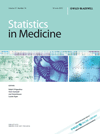
STATISTICS IN MEDICINE
Elevating biomedical research through rigorous statistical dialogue.Statistics in Medicine, published by Wiley, is a prestigious journal dedicated to the advancement of statistical methods and their application in biomedical research. Established in 1982, this journal has become a cornerstone in the fields of Epidemiology and Statistics and Probability, demonstrating its importance by consistently achieving a Q1 ranking in the 2023 category quartiles. With an impressive ISSN of 0277-6715 and an E-ISSN of 1097-0258, it serves as a vital platform for disseminating high-quality research that enhances evidence-based medicine. Although the journal does not currently offer open access, it remains highly regarded, holding a Scopus rank of #66 in Mathematics and #80 in Medicine, indicating its significant impact on the academic community. By publishing cutting-edge research, Statistics in Medicine aims to bridge the gap between statistical theory and practical application in health domains, fostering a rigorous dialogue among researchers, clinicians, and statisticians alike.